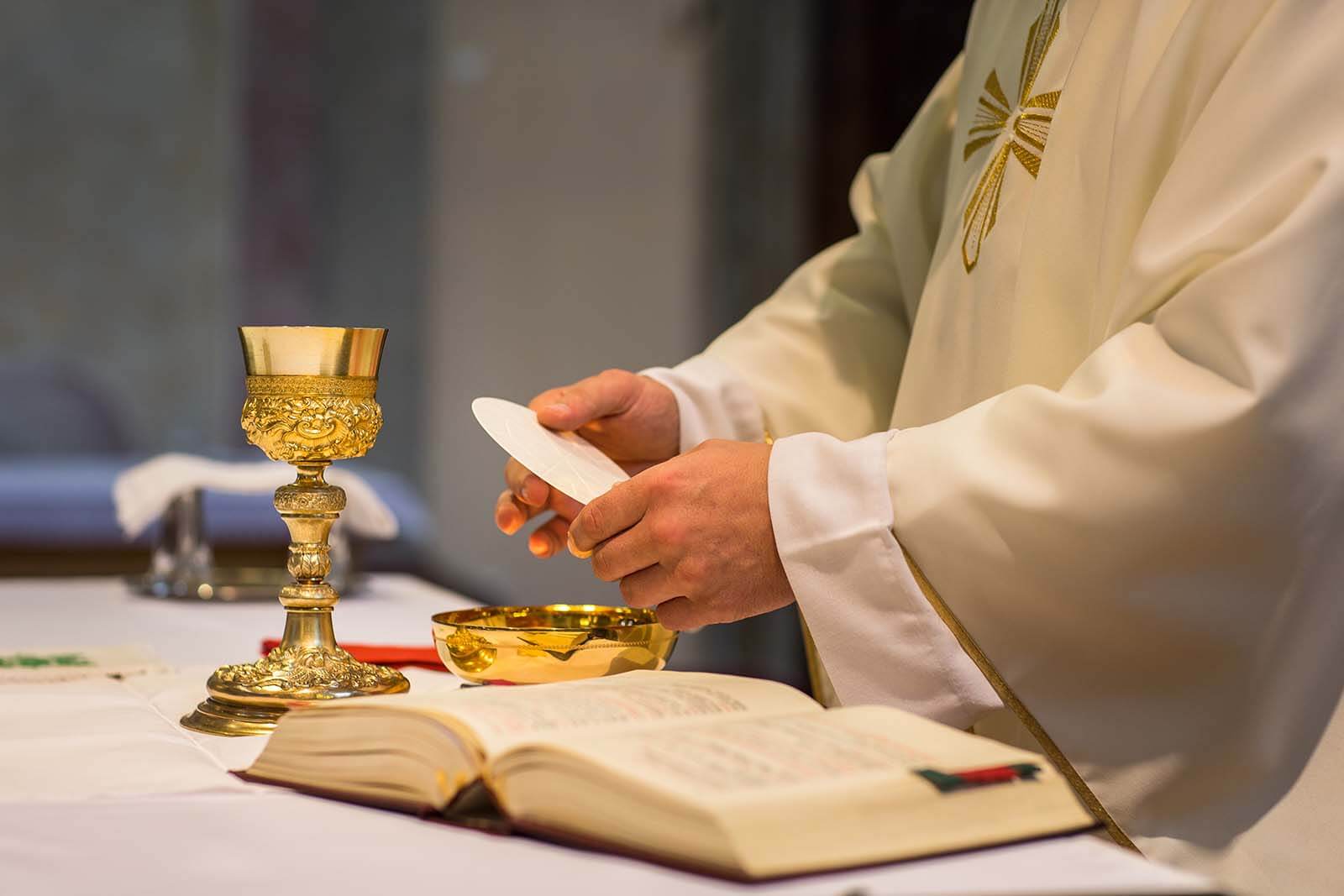This is the first time we kneel.
Today’s Lenten Lesson: Eucharistic Prayer (1)
Now it is time to kneel because something very important is about to happen.
I will spend the next seven lessons on the Eucharistic Prayer, and it would really help if you had a copy of the Eucharistic Prayers from your missalette, or Daily Roman Missal, or Magnificat, or mobile app so you can follow along.
At this point of the Mass, everyone is invited to kneel for the Eucharistic Prayer. Well, at least in the United States. In other countries – Spain, Italy, France, Mexico – the faithful stand until the Consecration.
We kneel because something holy and miraculous is about to happen: the bread and wine will be changed into the Body and Blood of Our Lord and Savior Jesus Christ. That’s why we kneel.
There are four standard Eucharistic Prayers for daily Mass, plus several others for Masses of Reconciliation and in some countries Eucharistic Prayers for Masses with children. For these lessons, I will focus on Eucharistic Prayer I, also known as the ‘Roman Canon’. The word ‘canon’ in the liturgy means that the prayer is ‘fixed’, and is the same day in and day out with limited exceptions for Christmas and Easter time.
The first Eucharistic Prayer – also known as the Roman Canon – is the prayer that your parents, grandparents, and great-great-great-grandparents all the way back to 1570 would have followed in Latin at Mass. It was the same from the Council of Trent until the reform of the Liturgy of the Second Vatican Council.
The Roman Canon is still basically the same, except we now pray it in the vernacular (English) and we’ve added the name of St. Joseph to the saints we commemorate at Mass.
If you have missed a previous Lenten Lesson or bonus video on the Mass, you can find all of them here. Or subscribe to receive these Lenten Lessons in your inbox each morning.


